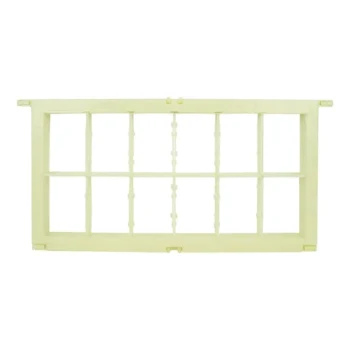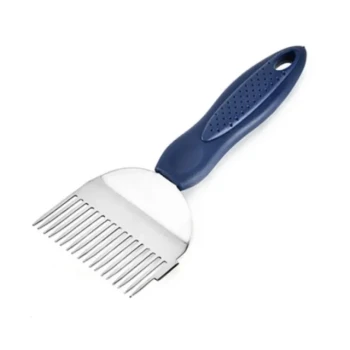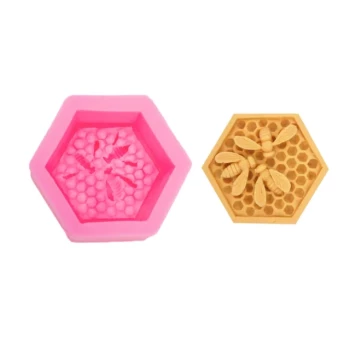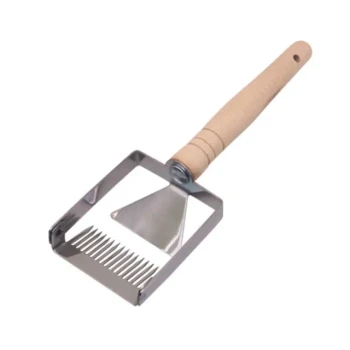For beekeepers seeking to protect their colonies, creating temporary shade is a straightforward and effective way to mitigate heat stress. The most common methods involve using simple structures like umbrellas, canopies, or flat shade sails to block direct sunlight, which helps lower the internal hive temperature and supports the bees' natural cooling efforts during the hottest parts of the day.
The core challenge isn't just blocking the sun; it's about aiding the hive's own thermoregulation system. An effective shade solution reduces the colony's workload, allowing them to focus on foraging and brood-rearing instead of just survival.

The Goal: Preventing Hive Overheating
During periods of intense heat, a beehive's internal temperature can rise to dangerous levels. Understanding why this happens and how bees respond is key to providing the right support.
The Impact of Intense Heat
A colony's primary goal is to maintain a stable brood nest temperature of around 95°F (35°C). When external heat is extreme, this task becomes incredibly demanding.
Excess heat forces bees to divert energy from productive tasks like foraging and nectar processing. Instead, they must focus on cooling the hive, often leading to a behavior known as bearding, where a large number of bees cluster on the outside of the hive.
How Bees Cool the Hive
Bees have two primary methods for cooling their home. First, they fan their wings at the entrance to create airflow. Second, forager bees collect water and spread it inside the hive, creating an evaporative cooling effect as other bees fan it.
Providing shade reduces the solar load on the hive, making these natural cooling mechanisms far more effective and less resource-intensive for the colony.
Practical Methods for Temporary Shade
Your choice of a temporary shade solution depends on the number of hives you have and your local weather conditions. The key is to block the intense midday and afternoon sun.
The Umbrella Method
For one or two hives, a large patio umbrella is a fast and simple solution. It can be easily positioned to cast a shadow over the hives during the hottest hours.
Ensure the umbrella is securely anchored. A heavy base or stakes are necessary to prevent it from becoming a projectile in a sudden gust of wind.
The Canopy or Shade Sail Method
For a larger apiary, a pop-up canopy or a flat shade sail is more efficient. These structures can cover multiple hives at once.
When using a shade sail, attach it to sturdy anchor points like T-posts, trees, or existing structures. This method provides excellent coverage and can be more stable in windy conditions than a canopy.
Understanding the Trade-offs
While providing shade is highly beneficial, it's important to implement it correctly to avoid unintended consequences.
The Risk of Trapping Heat
Your shade structure must allow for adequate airflow. A cover that sits directly on the hive or hangs too low can trap hot air, defeating the purpose. Ensure there is plenty of space between the hive and the shade covering.
Stability is Non-Negotiable
Temporary structures are, by nature, less stable than permanent ones. Always assume the wind will be stronger than you expect. A poorly secured umbrella or canopy can be blown over, potentially knocking over a hive and causing significant stress and damage to the colony.
Shade Is Only One Part of the Solution
Shade is critical, but it works best as part of a complete cooling strategy. Ensure your bees have a reliable, nearby water source to support their evaporative cooling efforts.
Furthermore, proper hive ventilation is just as important. Using a screened bottom board, propping the outer cover slightly, or adding an upper entrance can help hot, moist air escape, complementing the cooling effect of the shade.
Making the Right Choice for Your Goal
Select your shade strategy based on the scale of your operation and your primary concerns.
- If your primary focus is a quick solution for one or two hives: A well-anchored patio umbrella offers the easiest and most flexible option.
- If your primary focus is covering a small apiary: A shade sail or pop-up canopy provides more efficient coverage for multiple hives.
- If your primary focus is a comprehensive cooling strategy: Combine your chosen shade method with a dedicated water source and enhanced hive ventilation to give your bees the best possible support.
Ultimately, actively managing heat stress is a fundamental part of responsible beekeeping.
Summary Table:
| Method | Best For | Key Considerations |
|---|---|---|
| Umbrella | 1-2 Hives | Easy to position; requires secure anchoring. |
| Canopy / Shade Sail | Small Apiaries | Covers multiple hives; needs sturdy anchor points. |
| Combined Strategy | All Operations | Most effective when paired with a water source and hive ventilation. |
Ready to equip your apiary for success? HONESTBEE supplies commercial apiaries and beekeeping equipment distributors with the durable, wholesale-focused supplies needed to build effective shade solutions and maintain healthy hives. Let us help you protect your investment. Contact our team today to discuss your needs!
Visual Guide

Related Products
- Professional Beekeeping Suit for Kids and Girls Childrens Bee Keeper Suit
- Professional Hive Top Bee Feeder for Beekeeping
- Professional Hive Front Entrance Bee Feeder
- Boardman Entrance Bee Feeder Durable Galvanized Steel and Wood Construction for Beekeeping
- Stainless Steel Triangle Support Honey Strainer and Filters
People Also Ask
- What are the key components of a bee suit? Build a Complete Bee-Proof Barrier for Your Apiary
- What should be considered when choosing a bee suit for a child? Ensure Total Safety & Comfort for Young Beekeepers
- Is a bee suit necessary for beekeeping? Essential Gear for Beginner & Pro Beekeepers
- What is the purpose of a bee suit in beekeeping? Essential Protection for Safe Hive Management
- Can children wear bee suits? Equip Kids for Safe & Educational Beekeeping



















